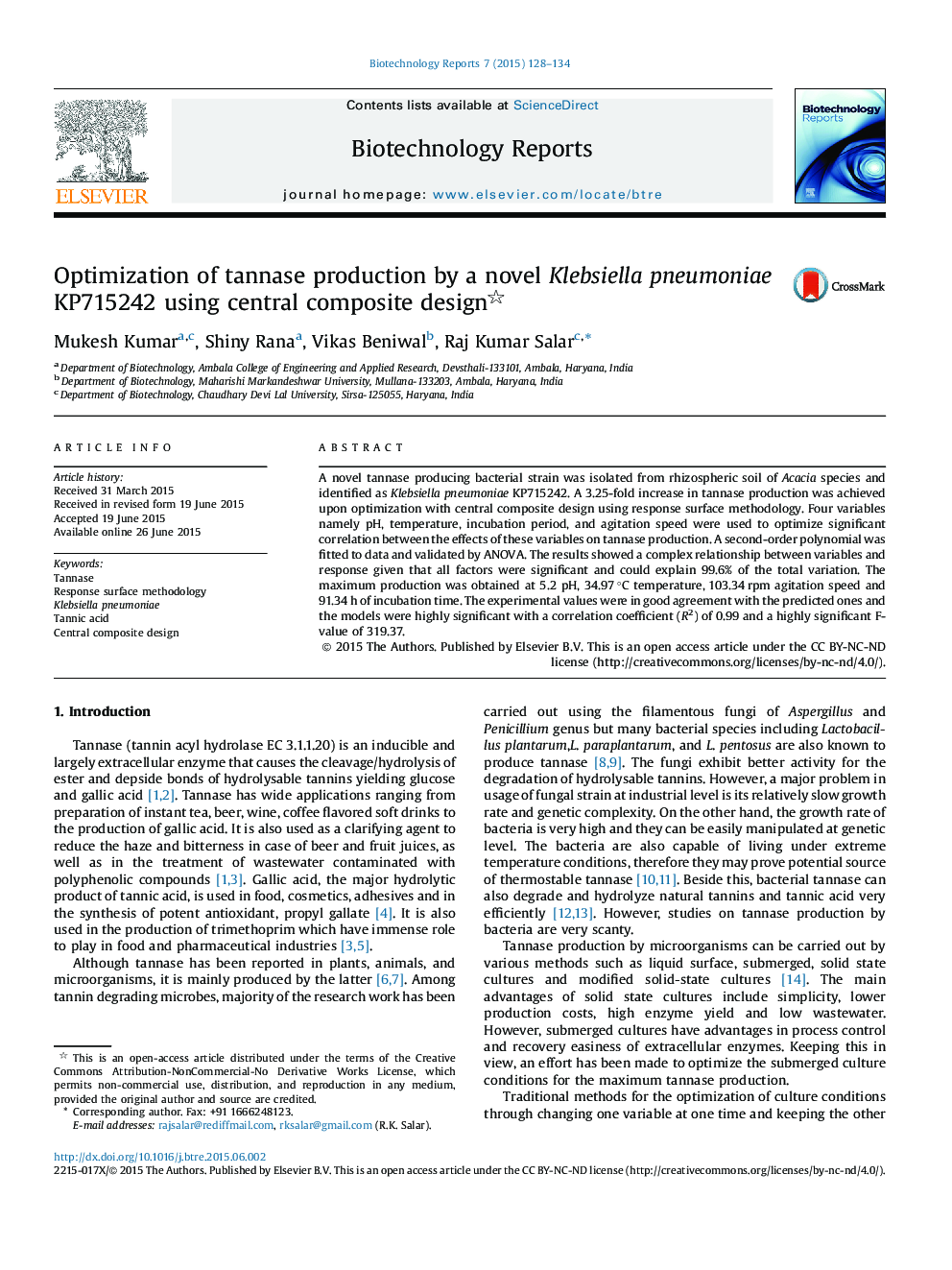| Article ID | Journal | Published Year | Pages | File Type |
|---|---|---|---|---|
| 870588 | Biotechnology Reports | 2015 | 7 Pages |
A novel tannase producing bacterial strain was isolated from rhizospheric soil of Acacia species and identified as Klebsiella pneumoniae KP715242. A 3.25-fold increase in tannase production was achieved upon optimization with central composite design using response surface methodology. Four variables namely pH, temperature, incubation period, and agitation speed were used to optimize significant correlation between the effects of these variables on tannase production. A second-order polynomial was fitted to data and validated by ANOVA. The results showed a complex relationship between variables and response given that all factors were significant and could explain 99.6% of the total variation. The maximum production was obtained at 5.2 pH, 34.97 °C temperature, 103.34 rpm agitation speed and 91.34 h of incubation time. The experimental values were in good agreement with the predicted ones and the models were highly significant with a correlation coefficient (R2) of 0.99 and a highly significant F-value of 319.37.
